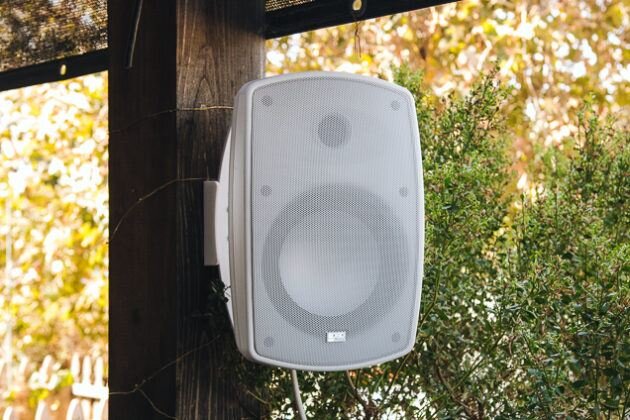How to Run Scenes on a Schedule
Overview
OnSwitch enthusiasts have been writing us for a long time asking for a feature that will run scenes on a schedule. We get these requests most frequently around the holidays. For example around Halloween people want to run Spooky Fun or Zombies Rising each evening on their outdoor lights. For people who are looking to accomplish something like this, this blog post will layout the details. It’s quite a few steps, but if you do them, you get quite a bit of power for both the holiday lighting scenario and also more common scenarios like running colorflows or fireplace on specific days at specific times.
Pre-Requisites
An iOS device where you can keep the screen unlocked, connected to home wifi and plugged in
iOS14 (or later) running on that device.
So for most people this means you need to use an extra device you have, not your personal phone.
Repurpose an unused ios device to act as your “onswitch Scene Scheduler/Server”
Quick Explanation Why:
OnSwitch scenes run using our own animation engine that handles lighting and sound on a millisecond precise timeline. We cannot save a scene to the smart-bridge and run it on the bridge using Hue Routines, for example. The smart-bridge can only store and run scenes with very simple animations and never with sound coordinated with it.
So, for a scene to run, it has to run on your phone or some other iOS device. While we still don’t have this feature built into our app it is possible to make this happen using Siri Shortcuts and Personal Automations. There’s one catch: the device has to be unlocked so the Siri Shortcut can run and as a practical matter it needs to be plugged in or this scheduled scene may only run one time before the battery runs out by the next day.
Scheduling Scenes: Step-By-Step
This section goes through all the steps in order. There are 4 parts, each part has numbered steps.
Set Screen Auto-Lock to Never
Create Siri Shortcuts
Create Scheduled Automations
(Optional) Set up external audio.
Required Apps
The steps to set up schedules requires these three apps.
PART-1: Set Screen Auto-Lock to Never
In Settings, go to the Display & Brightness category and do the following to keep your device from locking.
Tap “Auto-Lock”
Tap “Never”
PART-2: Create Siri Shortcuts
Do the following in OnSwitch. You will be creating 2 Siri Shortcuts. One to turn on the lights. The other to turn them off at a later time.
SHORTCUT TO TURN ON THE LIGHTS
Select the room/group/zone you want to control.
Tap the album/scene you want to turn on.
Adjust brightness and volume so it looks and sounds best.
Tap the Siri Shortcut button.
Tap the button to add the shortcut.
SHORTCUT TO TURN OFF THE LIGHTS
While it may be a little counter-intuitive, you are going to use an OnSwitch scene to turn off the lights. The Lights Out album was created for exactly this purpose (in addition to being super fun to use!)
Using the same Room/Zone/Group from the first shortcut do the following.
In the Lights Out album, tap an animated scene you want to turn off your lights. (Power Surge works really well for Zombies!)
Tap the Siri Shortcut button.
Tap the button to add the shortcut.
PART-3: Create Scheduled Automations
In the Shortcuts app do the following.
VERIFY YOUR SHORTCUTS
CREATE AUTOMATIONS FOR SHORTCUTS
There are a significant number of steps. We are going through them in blocks of 2 screens at a time.
1) On the Automation screen, tap “Create Personal Automation”
2) On the New Automation popup, tap “Time of Day.”
3) Tap Sunset — or any other start time of your choosing.
4) Tap Next.
5) Tap the “Search for apps and actions” search box to bring up the keyboard.
6) Type “Shortcuts” to find the shortcuts app,
7) Tap Shortcuts icon.
8) Tap “Run Shortcut” action from the list.
9) In the Shortcut template, tap the word “Shortcut”
10) From the list of shortcuts, tap your first shortcut, to turn ON your lights.
11) Tap “Next”
12) Turn OFF the option “Ask Before Running”. Very important!
13) Tap “Done” to complete this automation.
14) Notice your completed automation is now listed here. Good work!
————————————
To turn OFF the lights at a later time. Repeat this process for the second shortcut but select a time later in the evening you’d like your lights to go off.
————————————-
1) Tap “+” to create a 2nd automation.
2) Tap “Create Personal Automation” …
Go back to top of Part-3 and repeat steps but using Lights Out/Power Surge shortcut.
PART-4: (Optional) Set External Audio
OnSwitch scenes are always more fun with audio! If you are running a scene, like Zombies, where it only makes sense with audio, you can configure your external audio in advance and leave it set up for when your scheduled shortcut is going to run.
External audio options include:
Bluetooth speakers.
Standalone Airplay speakers like HomePod or Apple TV’s connected to televisions with soundbars.
Setting up the speaker:
Make sure your speaker is positioned where you want it, powered on and plugged in.
Pair the speaker to your device that will be running the shortcuts.
Wrap-Up
At this point everything should be set to work. As long as the device stays plugged in, it should run the shortcuts at the right times each day or whatever days you’ve specified the shortcuts to run.
This is obviously only one kind of automation. As you can see during the steps there are many other triggers for automations you can use. Experiment. Try everything. Have fun.












